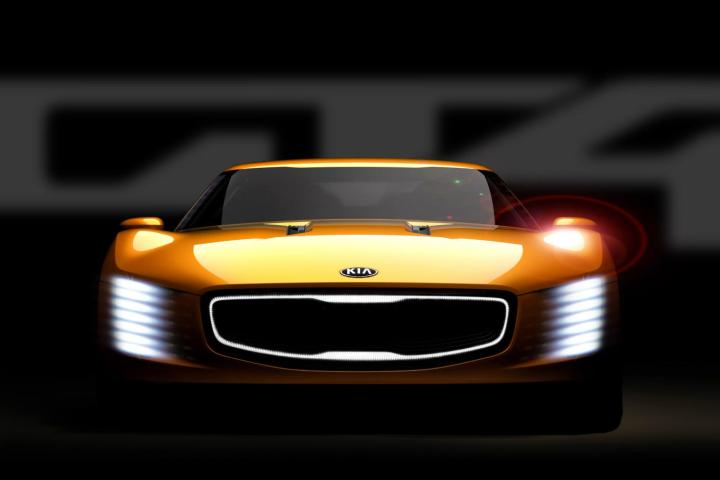
A pure, raw sports car with rear wheel drive … from Kia. It does sound a bit strange but, apparently that’s what is coming next from the Korean automaker – and it is called the GT4 Stinger.
Right now the car is just a concept, bound for the 2014 Detroit Auto Show. Kia has teased an image and a few detail, but mostly the car remains a mystery. What we do know is that it will have a turbocharged four cylinder, 315 horsepower, rear-wheel drive, and that it looks a hell of a lot like the Audi R8.
The concept renderin, released by Kia, shows a very low-slung car with more LEDs than a truckload of Audis. And while a production car is sadly likely to be toned down, this is the sort of car that may actually see a dealer lot.
Kia has shown a willingness to buck the expectation of buyers by releasing luxury vehicles like the K900. What’s more; because Kia is linked to Hyundai, it already has a RWD platform from the Genesis Coupe at its disposal.
Personally, though, I hope that if the GT4 Stinger does get made, it’s an entirely new car. The Genesis Coupe is a very fun sports car, but the platform is five years old and it was never a world-beater. But even if we get some old underpinnings, this is one exciting Kia.
Just remember, even if the Kia badge doesn’t seem fitting on a sports car, before Lamborghini made cars, it made tractors.


